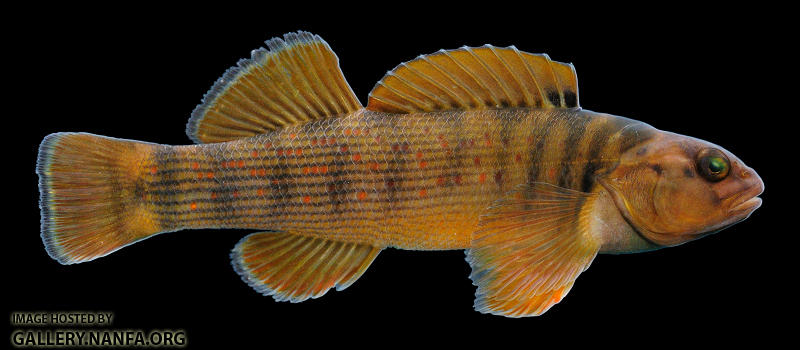We had perfect light for underwater photography, and with the water so low, the fish were very concentrated. It was really difficult at first to get fish to stay in frame, as they only had to swim over a rock and then I could no longer see them. Eventually tho, crawling around bumped enough out of their hiding places to get them to play nice.
 Bluebreast_01.jpg 146KB
2 downloads
Bluebreast_01.jpg 146KB
2 downloadsBluebreast Darter, Etheostoma camurum
 Bluebreast_02.jpg 160.57KB
0 downloads
Bluebreast_02.jpg 160.57KB
0 downloadsBluebreast Darter, Etheostoma camurum
 Bluebreast_15.jpg 167.7KB
0 downloads
Bluebreast_15.jpg 167.7KB
0 downloadsBluebreast Darter, Etheostoma camurum
 Bluebreast_09.jpg 172.94KB
0 downloads
Bluebreast_09.jpg 172.94KB
0 downloadsBluebreast Darter, Etheostoma camurum - Female
 Spotted_Darter_01.jpg 137.28KB
0 downloads
Spotted_Darter_01.jpg 137.28KB
0 downloadsSpotted Darter, Etheostoma maculatum
 Spotted_Darter_07.jpg 211.91KB
0 downloads
Spotted_Darter_07.jpg 211.91KB
0 downloadsSpotted Darter, Etheostoma maculatum
 Spotted_Darter_11.jpg 159.76KB
0 downloads
Spotted_Darter_11.jpg 159.76KB
0 downloadsSpotted Darter, Etheostoma maculatum - Female
 Stonecat_03.jpg 163.53KB
0 downloads
Stonecat_03.jpg 163.53KB
0 downloadsStonecat Madtom, Noturus flavus
Over the winter, I'll add video to my YouTube site. That was really the real jewel from this day, but it'll take a lot more time to process.
Todd













